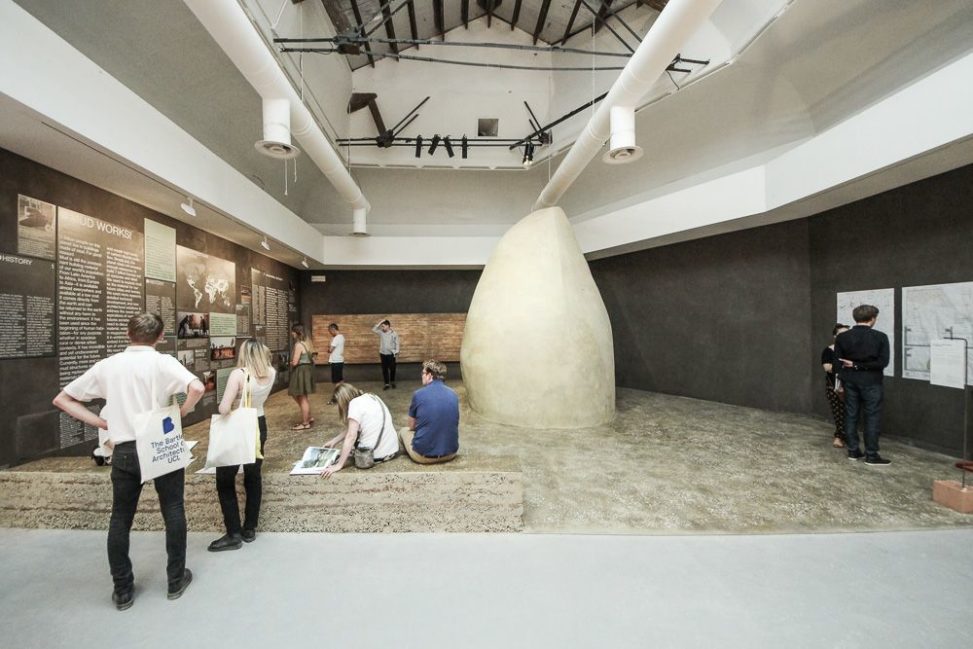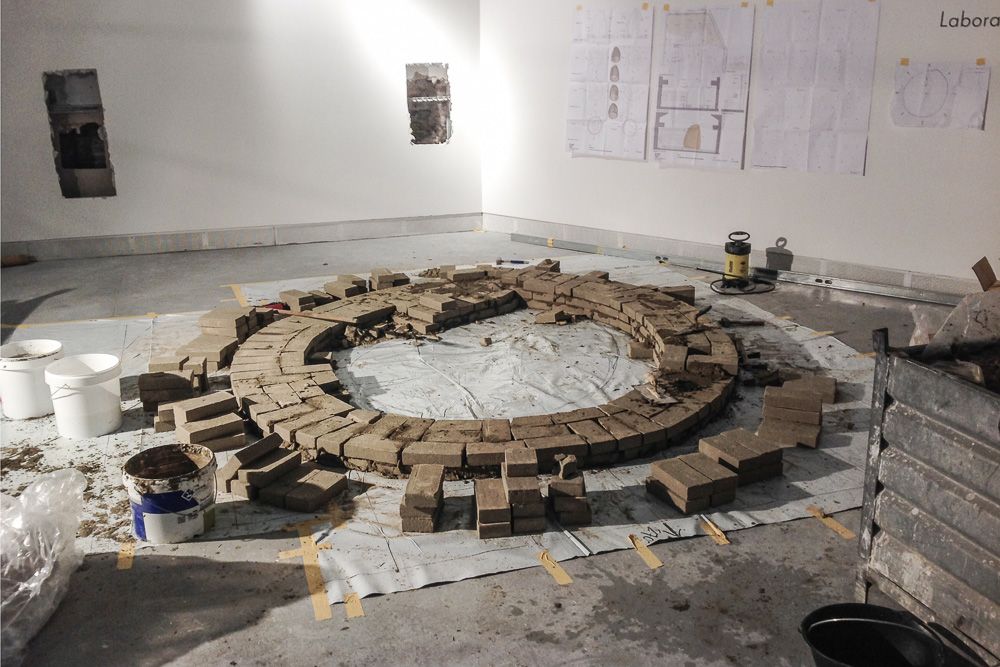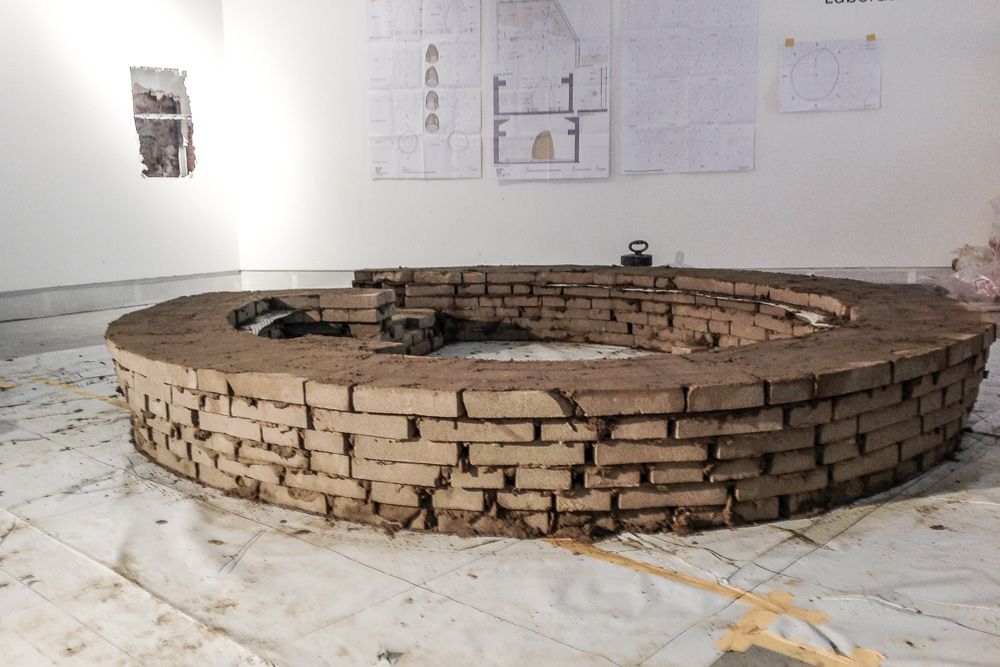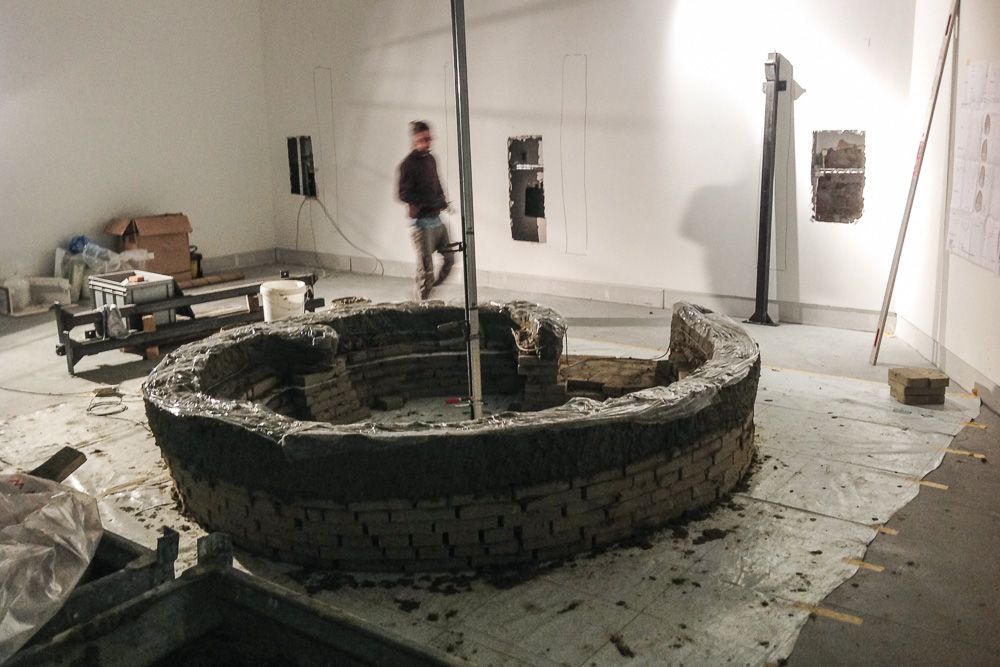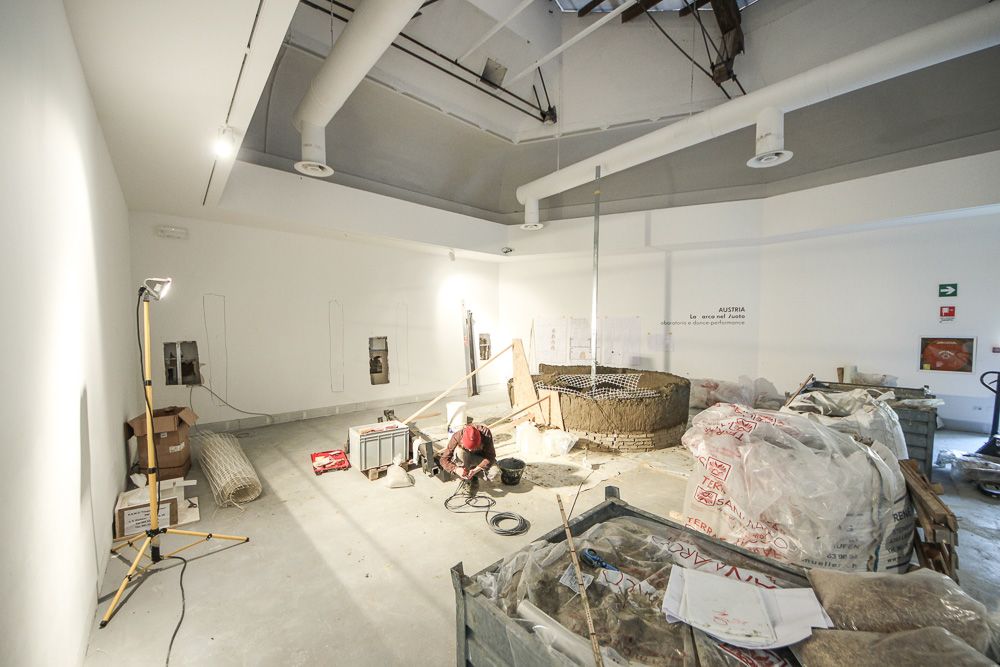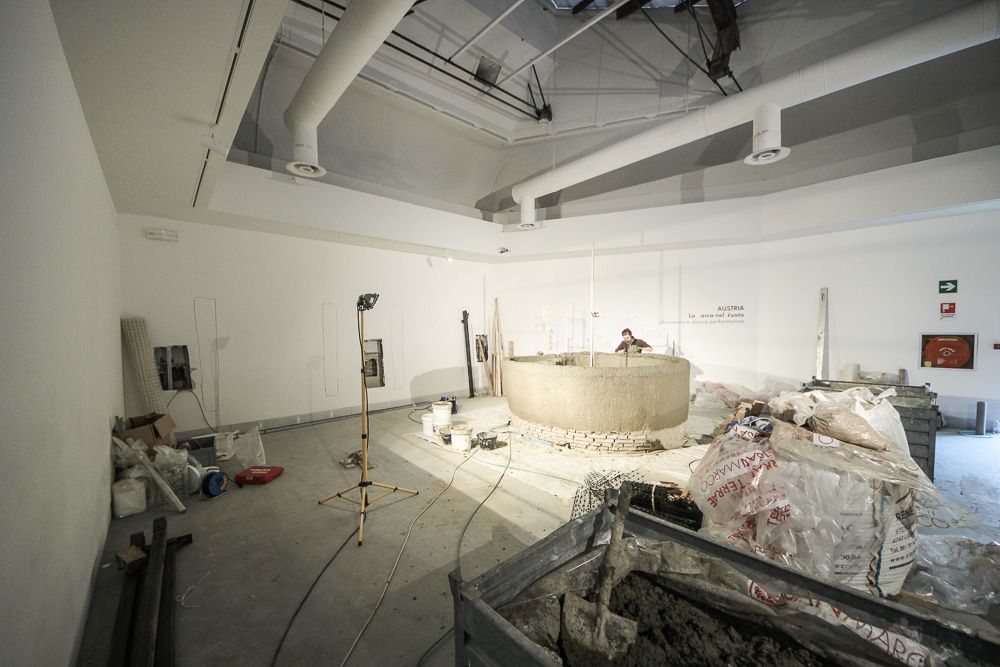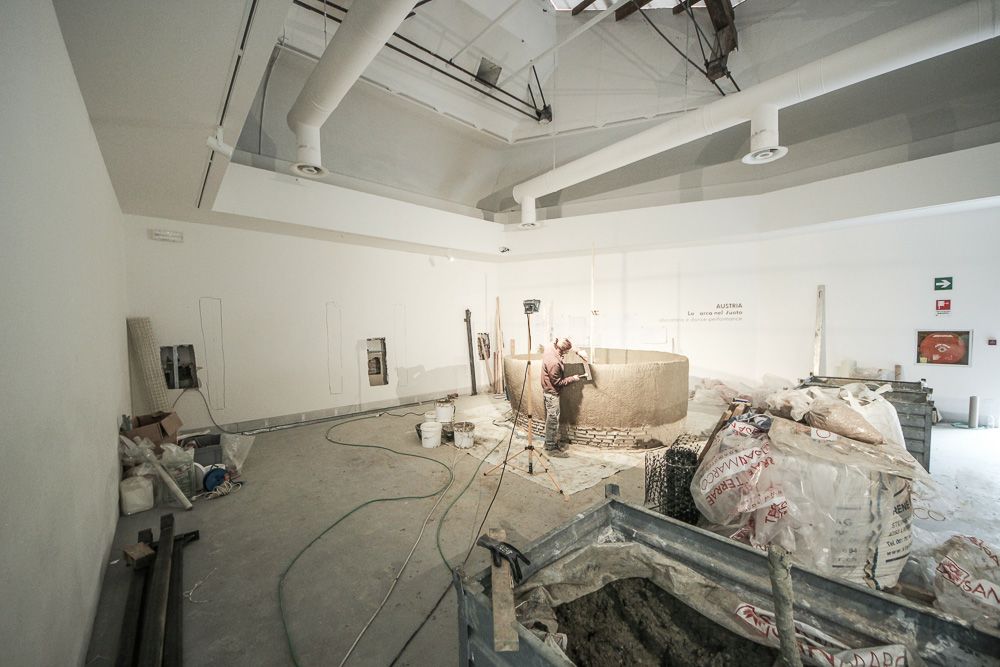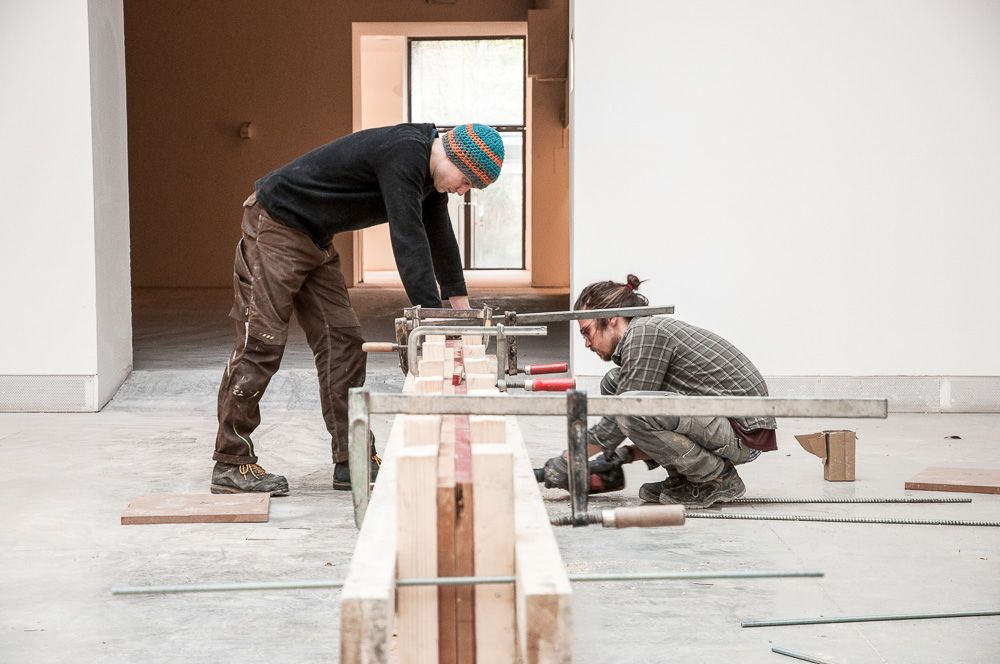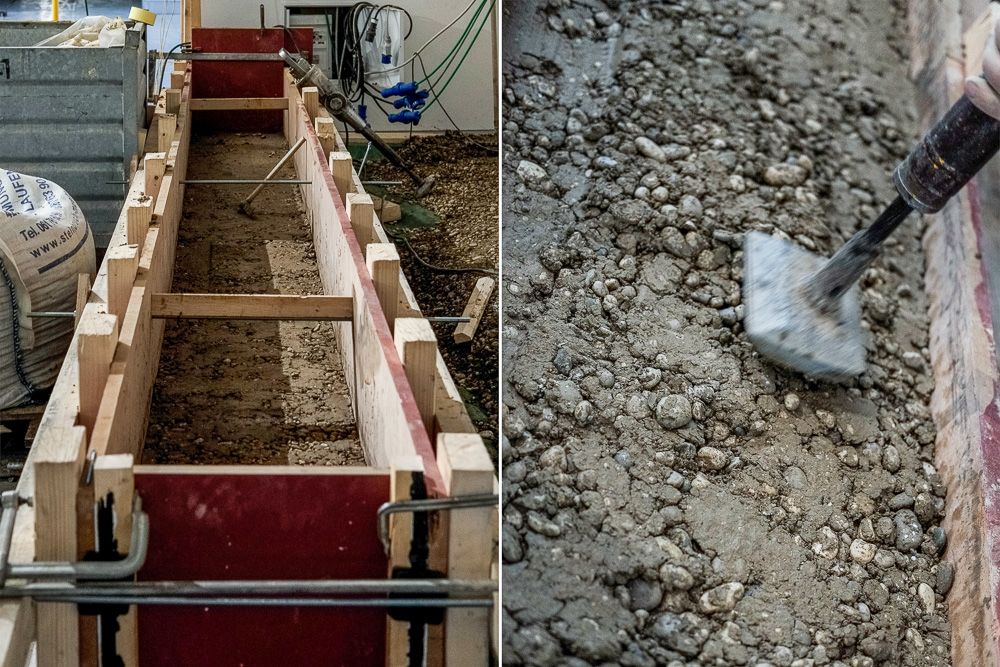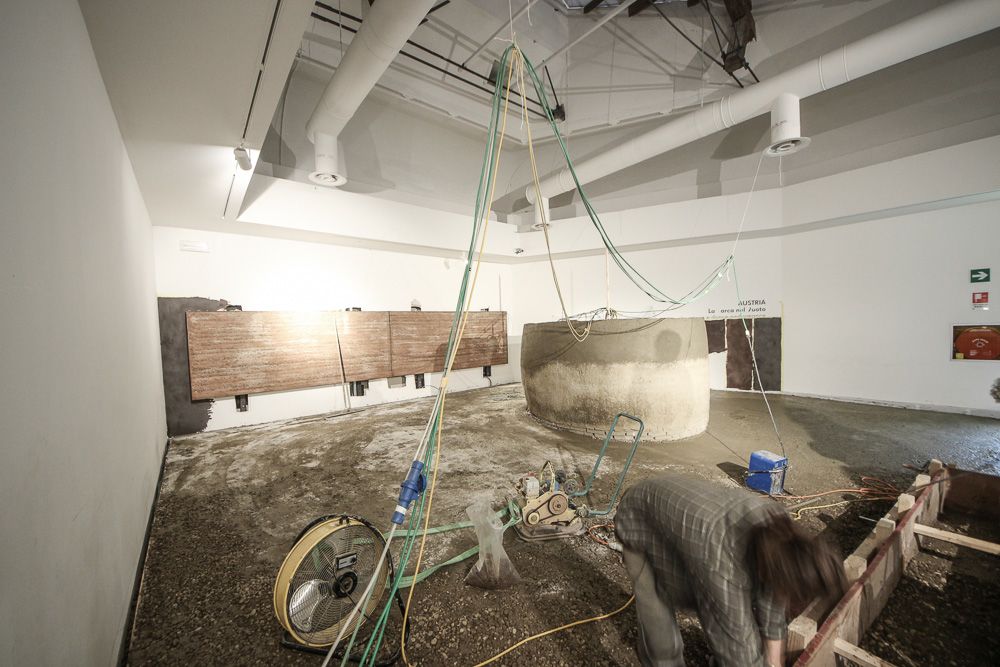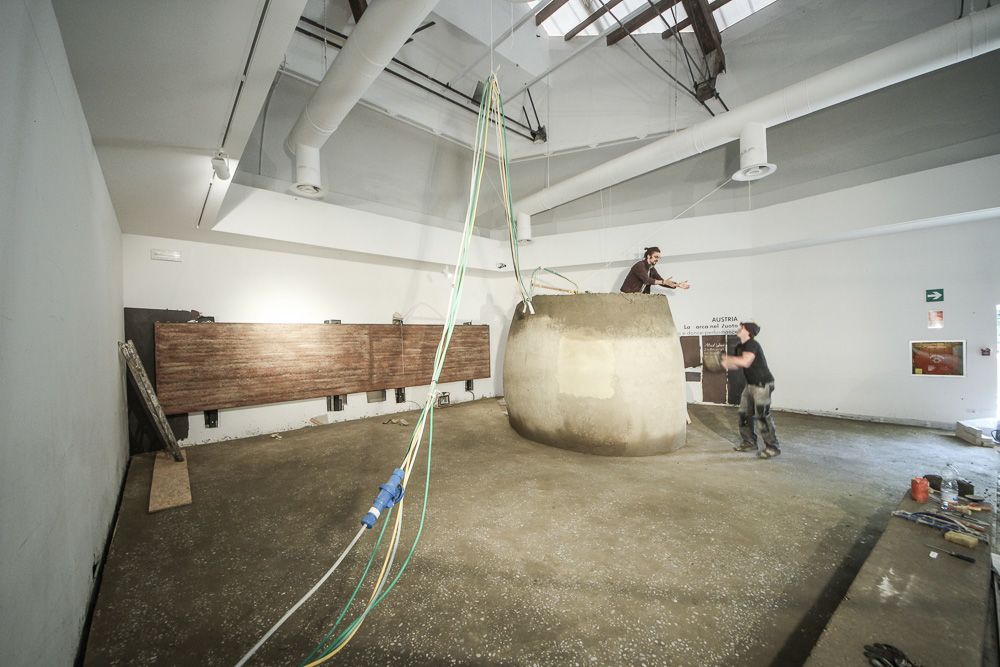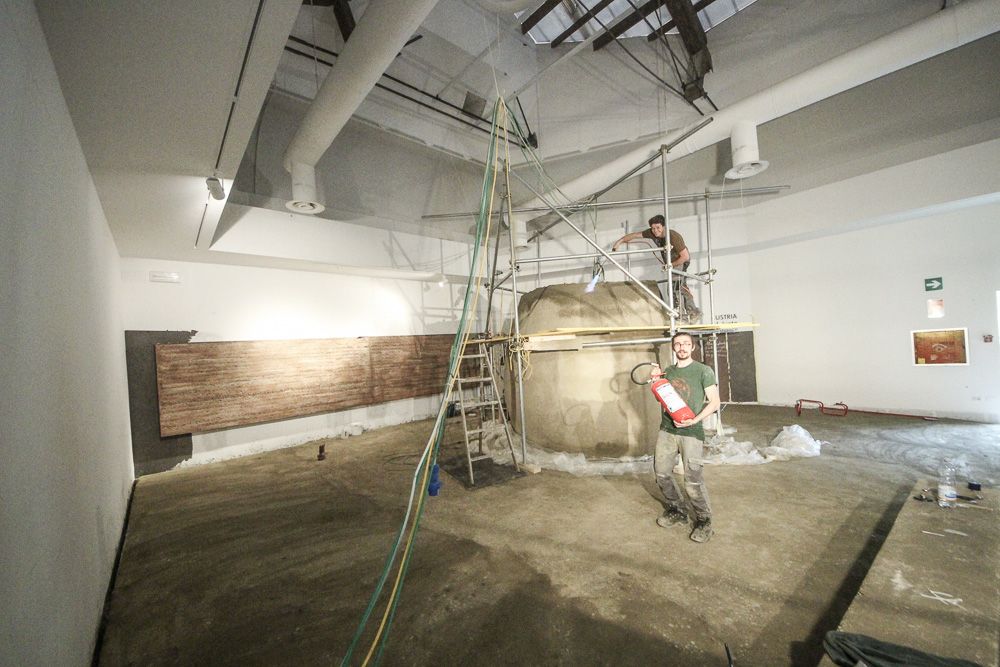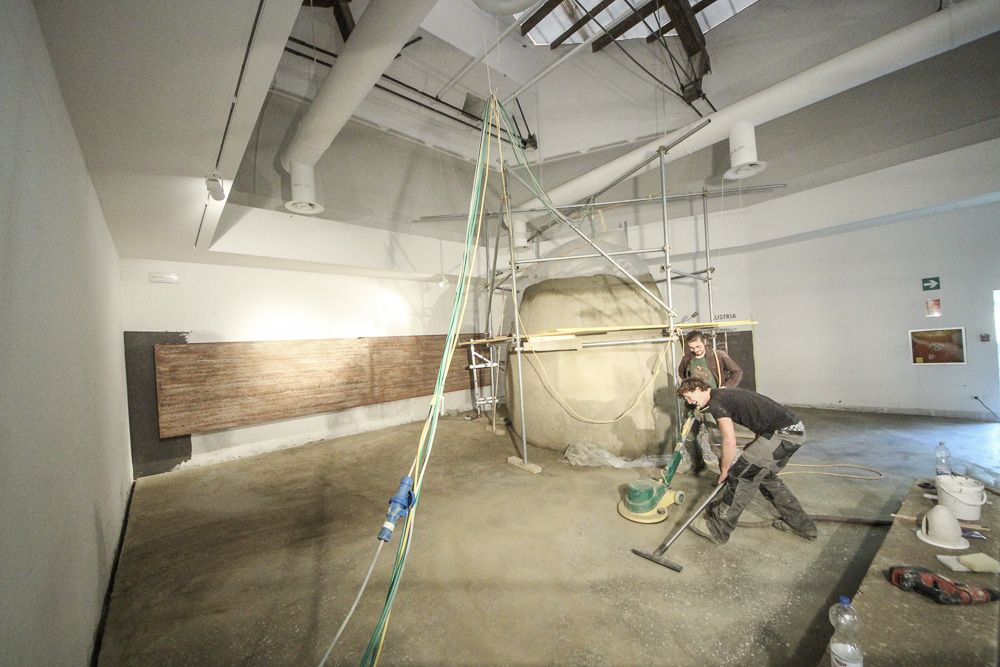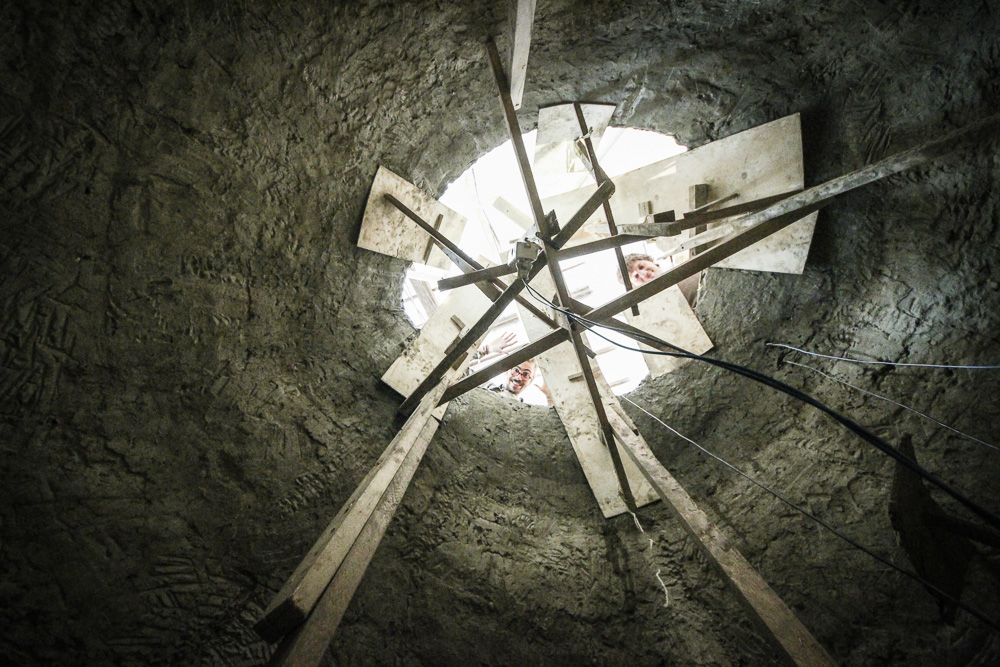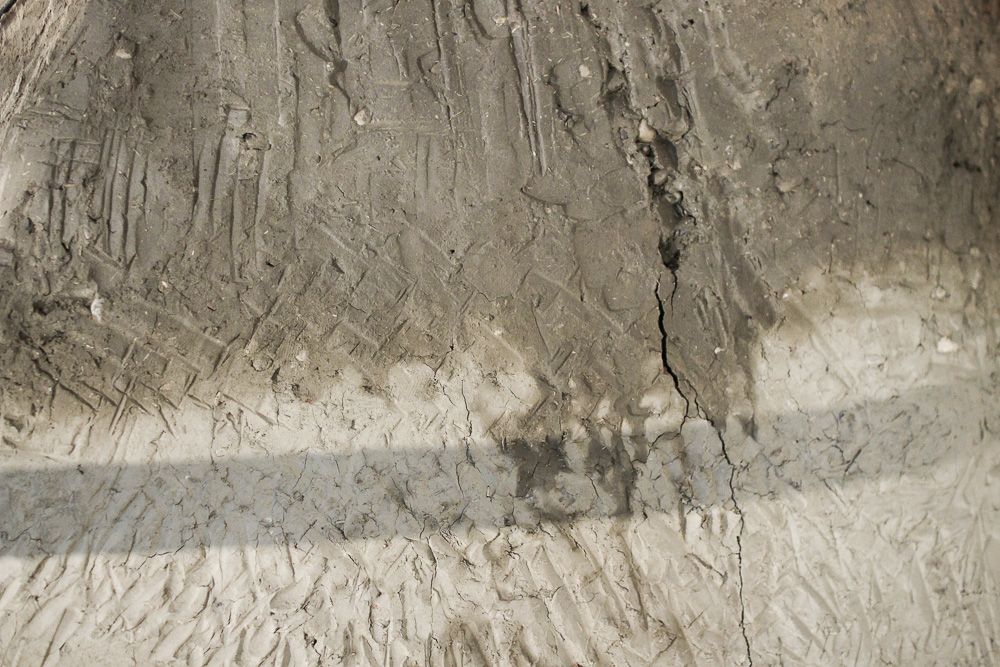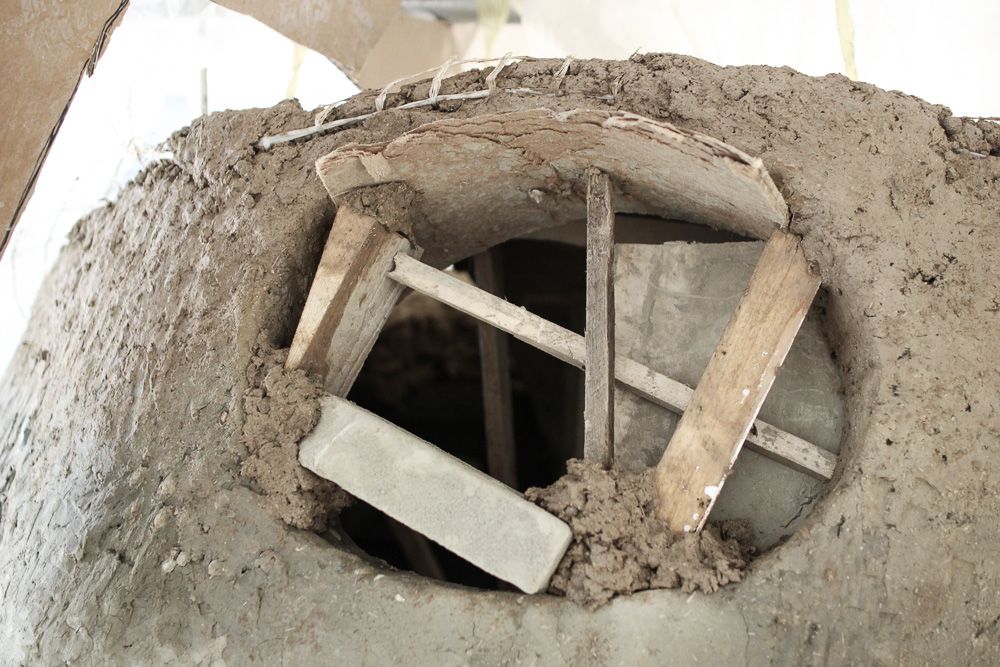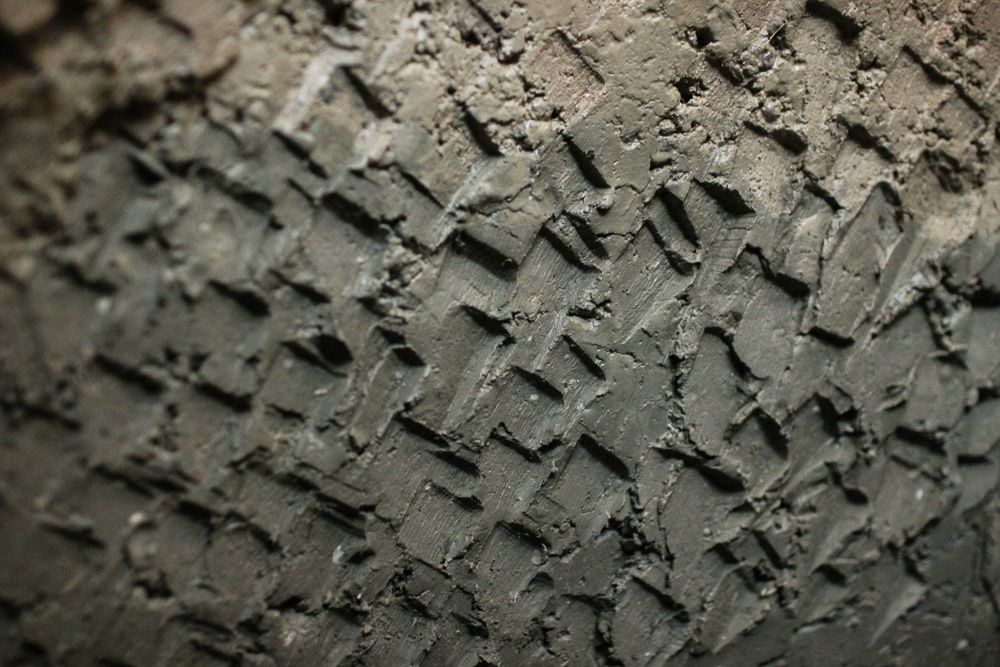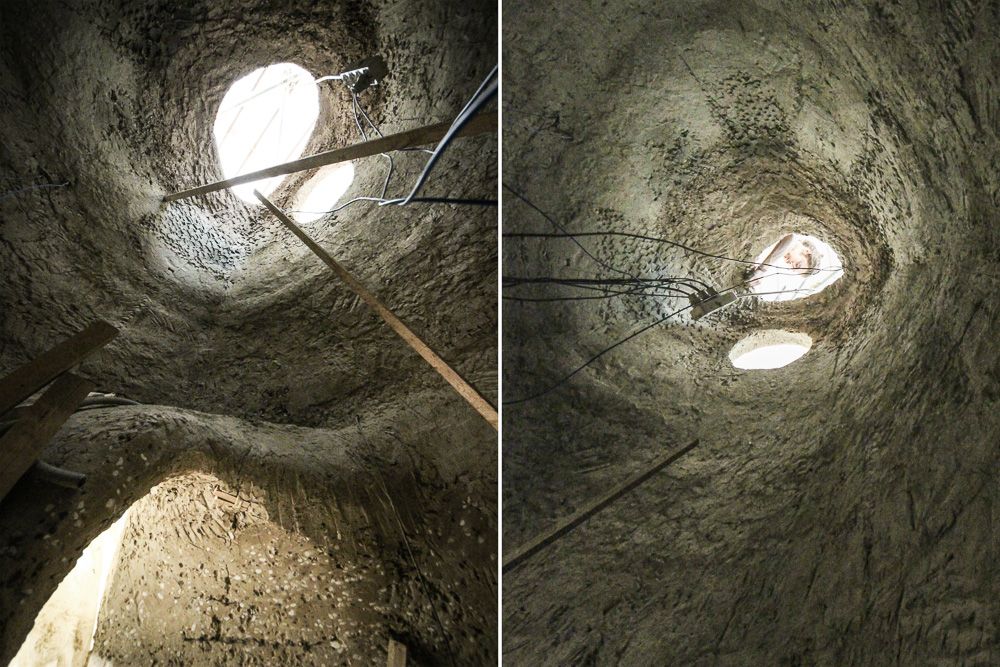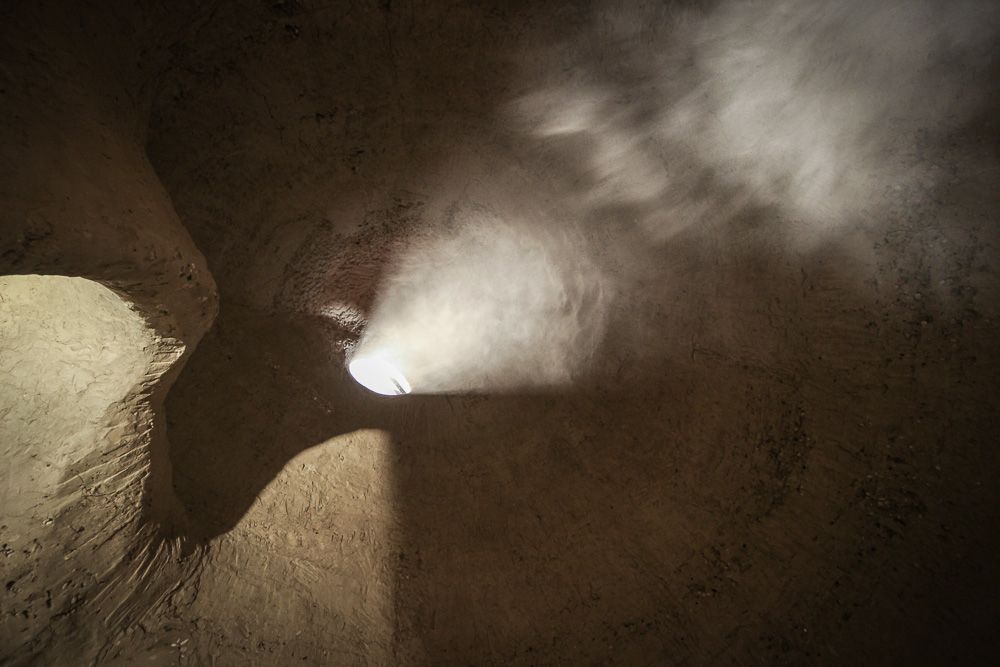VENICE ARCHITECTURE BIENNALE 2016
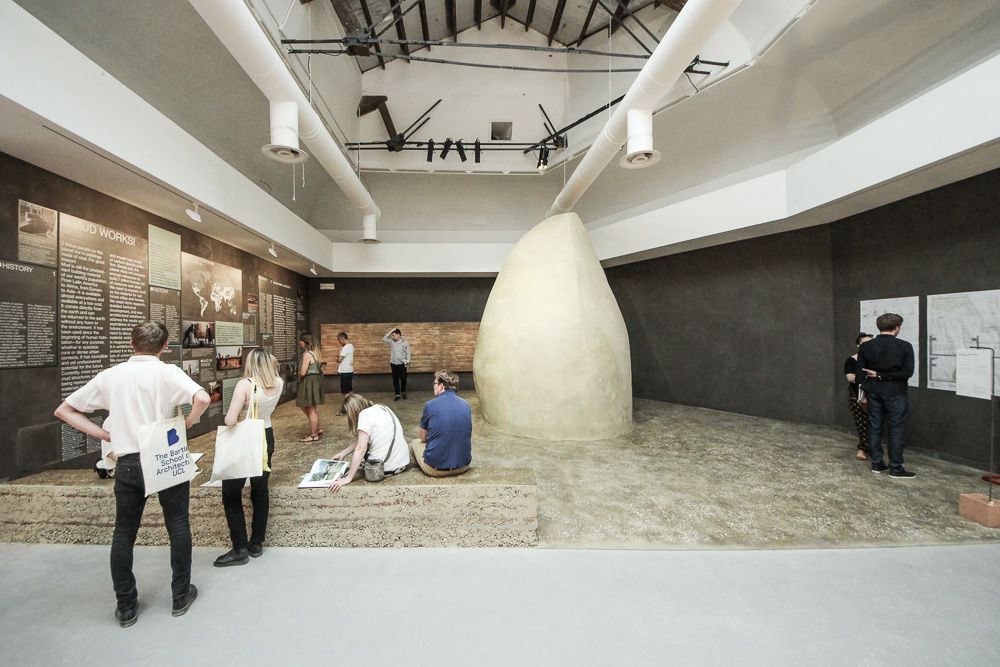
*COLLABORATION
- Project: Studio Anna Heringer, Lehm Ton Erde – Martin Rauch
- Site management, construction, architectural planning: Mori Stefano
The Installation “MUD works!”
Earth is more than a building material. The relationship between human beings and this material is as old as humankind—but we almost lost contact. This installation invites an experience of this material in a very intimate way. In our work, one of our primary challenges is convincing clients to believe in the quality of earth: its stability, its haptic treasures, its richness in colors, its positive influence on our body and mind. This is difficult to transmit with pictures. It needs to be touched.
This is why we transformed our exhibition space, with 25 tons of mud, into an immediate experience built in earth, including:
- a rammed earth floor with a rammed earth bench
- as rammed earth wall piece as a work of art (Stampflehmbild)
- mud-casein colors on the walls
- a sculpture to sit in called “Pepita” (the Italian word for nugget) in Zabur technique, shaped layer by layer using only the hands as a tool.
The Zabur technique used for shaping the Pepita sculpture is the most simple and direct way of building: shaping architecture by hand. Without formwork, the wet material, in this case comprised of a mix of clay and stones and traditional cocciopesto (recycled bricks) from Venice, is applied in layers of about 15 cm in height. The walls, although 15-10cm thin, are load-bearing.
The surface finish of the sculpture is unsealed and thus contributes to a comfortable indoor climate, in particular by balancing the humidity. The shiny surface is achieved with a fine mud plaster, polished by hand at the right moment, the right speed, and pressure.
The rammed earth wall panels were prefabricated in two parts.
10 cm thick formwork was filled with a saturated earthen mixture, layer by layer, and compacted with ramming. The working process is evident, as the physical energy required for compression is visible, similar to the lithogenous process. Through this stark compaction, and eventually through the drying process, the rammed earth wall becomes stiff and non-yielding without requiring any additional substances.
The working process remains visible, the individuality of the project tangible.
The bench and the floor were produced with the same mix as the Pepita, only in a more dry form and with more stones. As such, the graininess of the rammed earth mixture is formulated with a 12 cm thickness and compressed with a vibrating plate compactor, smoothened out, and after it has dried, the surface is treated with Carnauba wax.
The Facts
- Built area: 72 sqm
- Materials/techniques: rammed earth floor rammed earth bench, Cob/Zabur earth walls on mud bricks basement.
- Construction: March 2016 – May 2016
- Site: Venice Architecture Biennale – Giardini, Venice, Italy
- Supporters: Ricola Foundation, Arts and Culture Division of the Federal Chancellery of Austria, Curry Stone Foundation, SanMarco – Terreal Italia, Department of Architecture, Technical University of Munich, Jürgen Laartz, Federal State of Vorarlberg, LEHM TON ERDE Baukunst GmbH, gbd ZT GmbH, CommonThread.com.
- Collaborators: Stefano Mori (Site Manager), Johannes Lerch (construction), Clemens Quirin (Office Manager), Jomo Zeil (Assistant Architect), Sigurd Flora (Structural Engineer). Rebiennale.org (Logistic), Barbara Narici (Logistic). Lindsay Howe Blair (Editor of Texts), Zsuzsanna Stánitz (Assistant Curator). Workshop team of TU Munich
- Photo credits: Stefano Mori, Leonie Morano.

